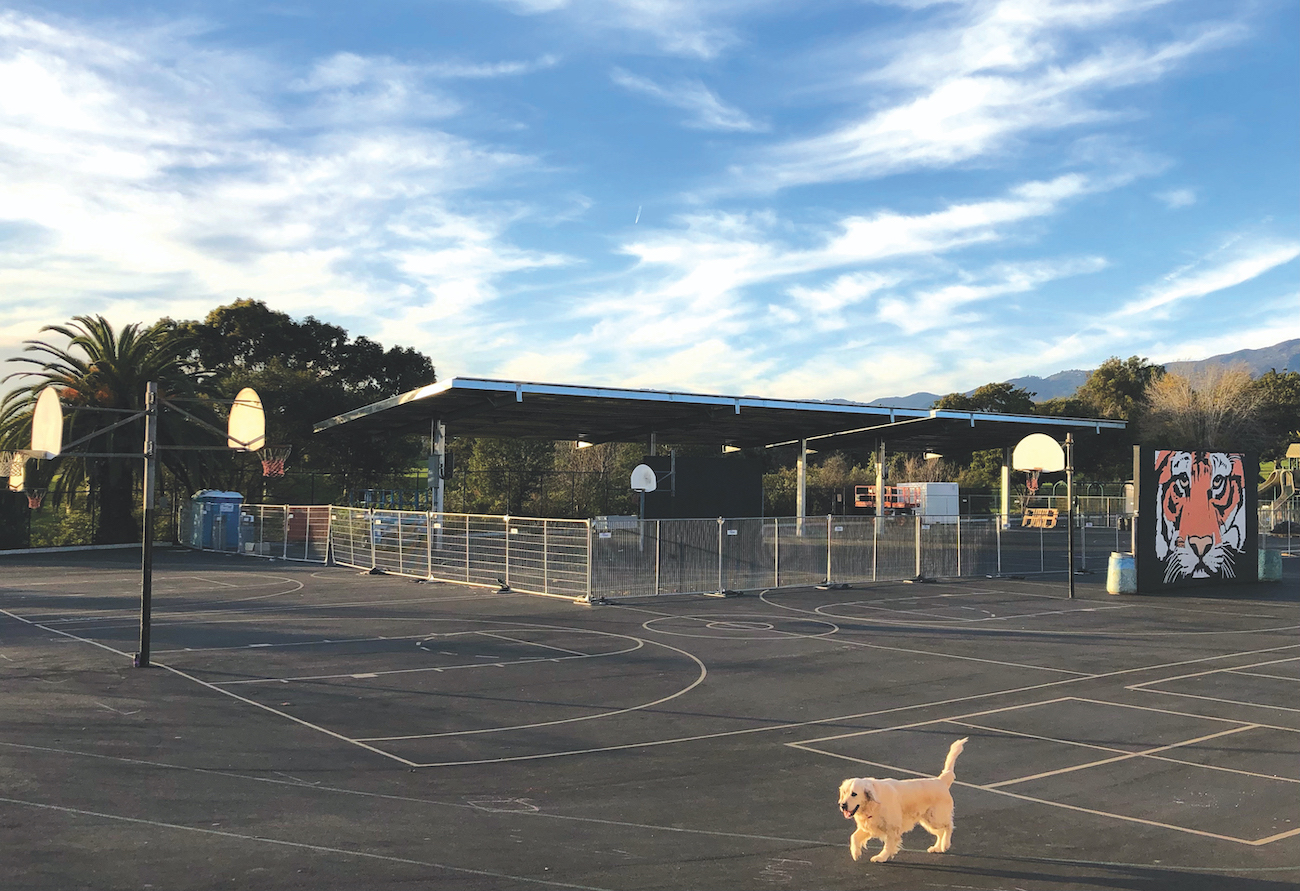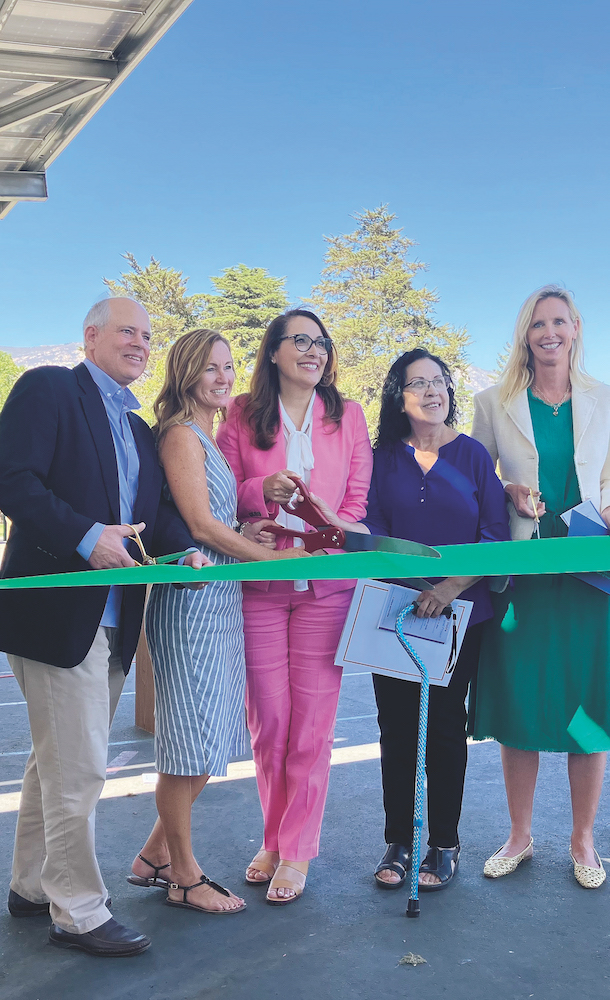Clean Coalition

Craig Lewis was as horrified as any of us to hear of the Maui wildfires that have caused so much loss of life and destruction in Lahaina, with the death toll having climbed over 100 with nearly 1,000 other people still missing as of this writing. But the disaster also serves as another warning to residents of the South Coast, an area still recovering from the effects of the Thomas Fire and Montecito debris flows five years ago.
“It’s a stark reminder of the vulnerability we have in Santa Barbara and how important it is to have energy resilience,” said Lewis, the founder and executive director of Clean Coalition, the nonprofit working to accelerate the transition to clean, renewable energy to power a self-contained electrical grid.
A powerline downed during a storm likely caused the first wildfire reported on the Hawaiian island, and it mushroomed from there.
“The utility kept the power lines energized even after they had sparked fires because the only way to power the pumps bringing water for fighting the fires was with electricity. They didn’t turn the power off because people needed to have electricity for their critical community facilities – communications, and the hospitals, police stations, and the fire department, including the water pumps to fight the fire. And the only way to get electricity to Lahaina was through the power lines,” he said. “So they were caught in this chicken-and-egg situation where they actually caused more fires and made a bad situation even worse.”

The solution for the “ridiculous Catch 22”?
Community microgrids.
Santa Barbara’s vulnerability is that nearly all of our energy, the region’s electrical grid known as the Goleta Load Pocket (GLP) that stretches from Point Conception to Lake Casitas, is served by transmission lines running through 40 miles of treacherous terrain threatened by wildfires, earthquakes, and mudslides. The two main lines share the same towers, so if one were to fall, both would stop working, largely plunging the region into electrical blackout. The only way to create independence and safety is to both generate and store enough electrical energy to be self-sustaining – i.e. community microgrids.
To make that happen for the Santa Barbara region would require 200 megawatts of locally generated solar, and 400 megawatt hours of local energy storage. The good news is that we’re well on our way to the storage number through projects that are either online or coming soon, but falling far short in generation.
“We are completely failing on the solar side,” Lewis said. “We need to get the solar cranking inside of our local community in order for the community microgrid to become a reality. Which means we need people to be putting solar in place on their homes or businesses – anyone who owns anything from a big parking lot with a roof down to a residential home or condo.”
Everybody is a bit of an exaggeration, Lewis admits. Reaching a critical minimum actually requires just seven percent of the rooftops to have solar panels and storage.
“This is not like putting a man on the moon; it doesn’t require a massive initiative,” he said. “It’s actually very achievable. It’s just one out of every 15 homeowners and businesses moving forward.”
Clean Coalition has been instrumental in getting the ball rolling, having helped with facilitation with technical, feasibility, and implementation aspects of larger projects for businesses, schools, and governmental organizations as well as nonprofits. Its success includes the three big area high schools that are part of the Santa Barbara Unified School District as well as Montecito Union School.
“We do the feasibility study, we manage the request for proposal process, facilitate the contracting with the party that’s going to provide the construction, support the construction management, and handle monitoring and verification to make sure that what gets delivered is consistent with what was contracted,” Lewis said.
Clean Coalition is currently supporting Santa Barbara Humane in creating a microgrid at the nonprofit’s new facility, and working with Casa Dorinda in Montecito and several other retirement homes, which are considered critical facilities.
While the Clean Coalition is doing what it can to propel the effort toward energy resilience through a full community microgrid, its size limits its impact as there is more need for its services than the organization can currently meet. Financial support can exponentially increase its work toward implementation of the microgrid.
“Donations and contributions let us build our staff in order to do more,” Lewis said. “The formula is simple: money equals staff equals more impact.”
As the recovery efforts in Maui continue, the reminder is there that time is of the essence, Lewis said.
“The truth is Santa Barbara has to worry about exactly the same things that happened in Lahaina,” he said. “We now have the benefit of hindsight to say let’s not sit on our laurels about our progress in solar, and actually get our community microgrid in place.”
Clean Coalition
Craig Lewis, Executive Director
www.clean-coalition.org
(650) 796-2353






